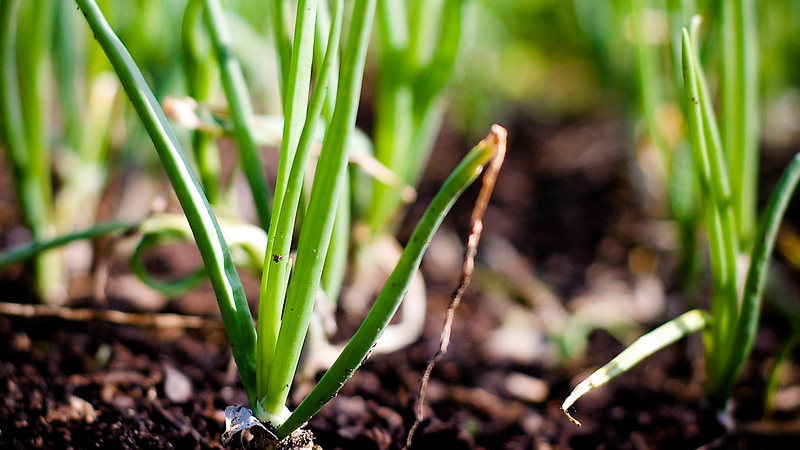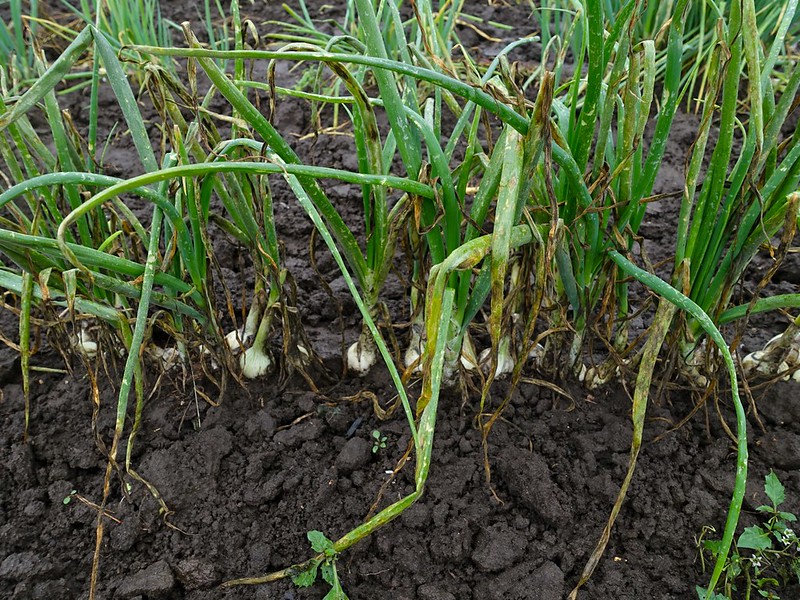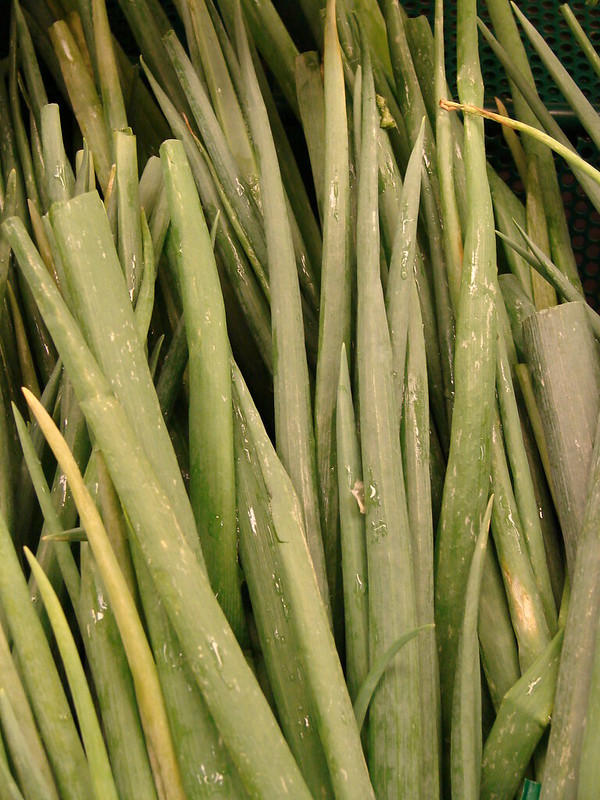After pouring hard work and time to plant and take care of your green onions, also known as scallions, your plant suddenly turned yellow. Oh no! This could prolong or hinder your most awaited harvest.
“Where did I go wrong?” “What have I done?” These must be the questions running on your mind. Calm down. We’ll figure out why this happened and we’ll find a way how to save your plants from completely wilting.

Scallions turning yellow is a common problem among these plants. They are usually harmless not until the yellowing spreads to the whole scallion. The leaves should be maintained at the best quality since they are the most utilized part of this plant.
The mild pungent and sweet taste of it complements different dishes across the world. They are most popular in Asia cooking, but it is also used in other cooking as a garnish or as an additional spice.
What Do You Really Know About Green Onions?

So to prevent the yellowing from providing further damage to your plant, you should look for early signs for us to troubleshoot immediately.
Some of the common reasons could be diseases caused by fungi or bacteria, pests caused by maggots and insects, and negligence of plant. Plenty to choose from, right? But to really help you diagnose, we’ll discuss later how to know what causes the yellowing.
GREEN ONION GROWING PROBLEMS
Wonder where you went wrong? Here are some of the reasons that could be due to poor maintenance or wrong planting practices:
- Weeding
Scallions do not grow well in competition with weeds. They have shallow roots that could be damaged by the roots of nearby weeds.
That’s why it is highly recommended to remove weeds during soil preparation and remove weeds through the growing season of scallions.
What to look out for
Weeds are classified as unwanted plants. They are small plants growing beside your plants.
They could compete with your plants for nutrients or worse damage the roots and other parts of your plant. Aside from this, weeds could also be carriers or vectors of different diseases, so it’s best to keep your garden bed from weeds.
What to do
First and foremost, choose a garden bed that’s free from weeds. If it is impossible, remove weeds before you start planting the scallions.
Weeds are resilient plants, they would grow again on the same spot if you haven’t removed the whole plant, including the roots. So make sure to perform a proper weeding process.
You might also consider mulching your plants to prevent weeds from growing nearby. Layer grass clippings, pine straw or fine pieces of bark on top of your garden bed. - Overwatering / Underwatering
Scallion plants need evenly moisturized soil to thrive. Therefore, watering is one of the most important resources of this plant.
What to look out for
Yellowing of the plant could either mean your overwatering or underwatering it. To understand this better, try placing your finger up to the second knuckle into the soil.
If you feel that it’s too dry or too soggy, then the probable cause of yellowing is poor watering practices.
What to do
Practice watering the scallion plants one inch of water per week. Make sure to evenly water the plants to avoid sogginess on one part.
You could also place a layer of mulch to trap and even out the moisture of the soil.
If you struggle and can’t determine if you are overwatering or underwatering I suggest you get one of these 3-in-1 meter testers.
They are super useful and affordable, you won’t regret it.
Did you know that
Green Onions Are Actually…
Click / Hover to Find the Answer
Just Premature Onions
GREEN ONION PESTS
Plants are highly susceptible to pests like insects, nematodes, or rodents. Here are some of the most common pests that could cause yellowing of green onions.

- Onion maggots
This type of microorganism is a very common pest of onions. This brown hunch-backed insect could damage your crop seriously, if not maintained properly.
The larval stage feed on the roots and bulbs of your green onions. They also crawl into the leaves and shoots.
What to look out for
If you noticed bulbs that are already infested apart from yellowing, wilting and browning of the leaves, then this is a clear sign of onion nematodes infestation.
The presence of larval insects around your garden bed is also a sign of infestation.
What to do
To prevent nematodes from further infestation, you could use natural biological enemies. This will also reduce the chemical residue in your plants.
Introduce predaceous ground beetles and nematode Steinernema feltiae in your garden. This could significantly reduce the number of pests.
After your harvest, make sure to rotate the crops in your garden bed. Then, try delaying the sowing of plants until temperature reaches 95 °F. - Nematodes
While I recommended the use of nematodes to manage the population of onion maggots, other types of nematodes could be harmful to your crops.
What to look out for
When the yellowing of leaves is accompanied by wilting leaves and stunted or deformed growth, this just suggests that the nematodes living in the soil are harmful to your plants.
Different types of nematodes love to feed on garlic and onion family. That’s why you might find a whole lot of damage signs and symptoms of infestation on your plant that could be unique from one another.
What to do
Revisit the crop history of your garden bed. Plants like chives, leeks, and lettuce could be a carrier of harmful nematodes. After suffering from an infestation, refrain from planting those plants for three years.
You should also look into your garden equipment and machinery to stop the growth right there and then. Clean all your materials that have direct contact with the soil with clean running water.
GREEN ONION DISEASES

Just like the human body, plants like green onions could suffer from diseases caused by microbes.
- Pink Root
This disease is caused by a fungus that is soil-borne. Aside from onions, this disease could also affect garlic.
Since the causing microbes came from the soil, its main target is the roots of the plants, This results in discoloration of the roots and bulbs, and in turn, affects the colors of the leaves.
What to look out for
Yellowing of leaves suddenly results in wilting of tips. As mentioned, discoloration of roots to red, pink, or purple. Then, the discoloration could climb up to the bulbs.
This also results in stunted growth and low volume of yield.
What to do
To manage this disease, you should rotate your crops for three to six years. This will reduce the occurrence of the disease in your garden bed. Thus, it will also prevent from spreading to other plants.
You could also opt to use disease-resistant varieties to avoid such infestation. This would guarantee healthy onions and fuss-free harvest.
You could also opt for fumigation with the right amount of metam sodium of chloropicrin. Although it could have an economic impact, this will surely help you in managing fungi in your garden. - Downy mildew
This disease is also caused by a fungus that greatly affects a lot of crops.
What to look out for
Downy mildew is easy to identify because of the yellowing, dampening, bending, and dying of leaves. This could start as harmless yellow spots in your leaves. But when the yellowing starts, it is actually really difficult to stop the disease from spreading.
Apart from that, dampening or watery bulbs, stalks and flowers could also be noticed.
What to do
Do the following planting practices to avoid and manage downy mildew in your garden.
Avoid too much moisture or water on the leaves and upper part of the plant. This plant is surely moisture-loving, but avoid using sprinkler irrigation and watering above the plant. Select well-draining soil, as well.
Then, you could also apply the three-year rotation of plants in your garden bed. This would help in reducing the number of fungi in your soil.
Also make sure that the bulbs and seeds that you will be using came from healthy mature plants, which means the mother plant do not have diseases or unnecessary element or particle. - Bulb Rot
A type of fungous is still the culprit for this kind of disease. The effect of the fungus would not be easily recognized on the field but upon storage.
This disease leaves the bulbs rotting and indirectly results in yellowing of the leaves.
What to look out for
Early signs of this disease could be traced to yellowing and wilting of the leaves. You could also notice how the bulbs darken and get watery. This weakens the bulbs which result to decay.
You could also see stunted growth among these plants and others.
What to do
There are numerous ways to deal with this infestation. Just be sure that you’re not too late before the plant finally surrenders to bulb rot.
Remove the infected areas and plants. To avoid the spreading of this disease you could cut and remove infected plants in your garden.
As you know, green onions do not work well with competition. Also, weeds could be the vector of diseases that could affect your harvest. Rethink if you want to try resistant varieties like Elba, Globe, and Hickory.



